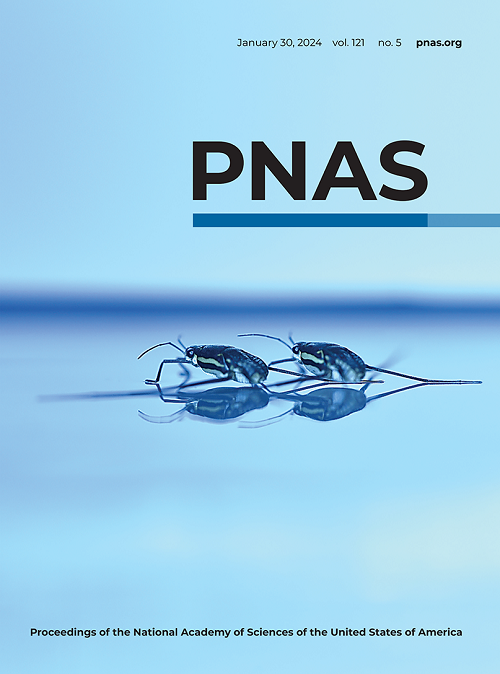Molecular basis for substrate recognition and transport of mammalian taurine transporters
IF 9.4
1区 综合性期刊
Q1 MULTIDISCIPLINARY SCIENCES
Proceedings of the National Academy of Sciences of the United States of America
Pub Date : 2025-07-02
DOI:10.1073/pnas.2425549122
引用次数: 0
Abstract
The taurine transporter (TAUT) mediates cellular taurine uptake, playing a critical role in human health and longevity. In this study, we present cryogenic electron microscopy structures of both mouse and human TAUT in various conformational states. The taurine-bound, occluded forms of mouse and human TAUT reveal the substrate binding pocket and the ion binding sites. The amino group of taurine interacts with Glu406 at the binding site, constituting a key structural feature determining substrate preference. While both imidazole acetic acid and guanidinoethyl sulfonate (GES) inhibit TAUT by competing with taurine for the binding site, GES also functions as a substrate of TAUT. Moreover, mouse TAUT is captured in an inward-open apo conformation, where the tilted movement of transmembrane helix (TM) 1a opens the intracellular gate. Notably, TM6 exhibits two distinct conformational states: the canonical form consisting of two half-helices and a continuous straight helix. In the latter conformation, TM6 partially occupies the substrate binding site, likely promoting taurine release. Together, our findings provide critical insights into the molecular mechanisms by which TAUT recognizes and transports taurine.哺乳动物牛磺酸转运体底物识别和转运的分子基础
牛磺酸转运蛋白(TAUT)介导细胞对牛磺酸的摄取,在人类健康和长寿中起着至关重要的作用。在这项研究中,我们展示了小鼠和人类在不同构象状态下的TAUT的低温电镜结构。牛磺酸结合的封闭形式的小鼠和人TAUT揭示了底物结合袋和离子结合位点。牛磺酸的氨基在结合位点与Glu406相互作用,构成了决定底物偏好的关键结构特征。虽然咪唑乙酸和胍乙酯磺酸(GES)通过与牛磺酸竞争结合位点来抑制TAUT,但GES也作为TAUT的底物发挥作用。此外,小鼠TAUT被捕获为向内开放的载脂蛋白构象,其中跨膜螺旋(TM) 1a的倾斜运动打开了细胞内门。值得注意的是,TM6表现出两种不同的构象状态:由两个半螺旋组成的规范形式和一个连续的直螺旋。在后一种构象中,TM6部分占据底物结合位点,可能促进牛磺酸释放。总之,我们的发现为TAUT识别和运输牛磺酸的分子机制提供了重要的见解。
本文章由计算机程序翻译,如有差异,请以英文原文为准。
求助全文
约1分钟内获得全文
求助全文
来源期刊
CiteScore
19.00
自引率
0.90%
发文量
3575
审稿时长
2.5 months
期刊介绍:
The Proceedings of the National Academy of Sciences (PNAS), a peer-reviewed journal of the National Academy of Sciences (NAS), serves as an authoritative source for high-impact, original research across the biological, physical, and social sciences. With a global scope, the journal welcomes submissions from researchers worldwide, making it an inclusive platform for advancing scientific knowledge.

 求助内容:
求助内容: 应助结果提醒方式:
应助结果提醒方式:


